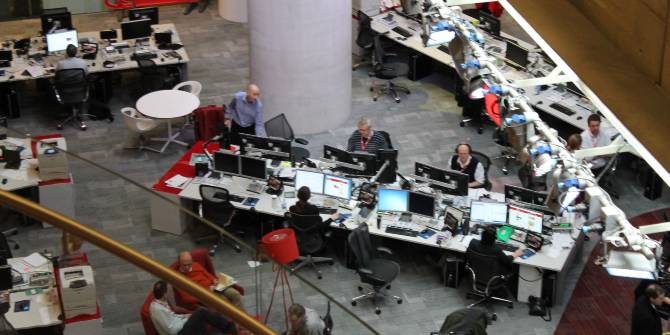The pandemic has had a devastating effect on already fragile food chains, with millions more going hungry. But the scale of the crisis has created the opportunity for grassroots change, says Ninette Rothmüller (CUNY) – if we can seize it.
Hunger is life-threatening. Yet it was only in 1948 that the United Nations General Assembly, the first organisation to do so, recognised the right to food as a universal human right. As the COVID-19 pandemic intensifies the global hunger crisis, it is compounding food insecurity – which is strongly correlated with, for example, gender, race and age.
Small-scale food producers, who represent 40% – 80% of producers in developing countries, and who are mostly women, have been hit the hardest. In June 2020, the United Nations expected the economic shock caused by the pandemic to affect approximately two billion rural producers and farm workers. Women represent two-thirds of the 600 million impoverished livestock farmers globally and 43% of the agricultural labour force in developing countries. They mostly farm plants that cannot adapt to the climate emergency.
In April 2020 the European Food Banks Federation (EFBF), which is the umbrella organisation of European food banks and pantries, together with its US counterpart, Feeding America and the Global FoodBanking Network, published a joint statement, The COVID-19 Pandemic is Deepening the Hunger Crisis. The following month the EFBF reported that food pantries and food banks would not be able to fight the hunger crisis caused by the pandemic on their own. Without action, as well as industry support, food banks would not be able to provide all the support needed in 2020.
Agricultural economics researcher Maria Sassi of the University in Pavia writes that “t]he right to food is based on the food security pillars of food availability, access, utilisation, and stability, but it complements the technical concept with legal aspects of human rights and its principles of human dignity, accountability, empowerment, non-discrimination, and participation”. Erik Millstone of the University of Sussex explained to me in April 2020 that in his definition the five components of food security are “sufficiency, sustainability, safety, health and equity.” Within these frameworks, food security and the right to food intersect with crucial notions of human identity, vulnerability and equality. Putting food-security components into action and encouraging personal and social contact has traditionally been at the core of the conceptual model of most food banks. Social distancing rules during the pandemic made fulfilling it impossible.
Meanwhile, a growing mountain of food waste speaks to interruptions in food systems, and stands in stark contrast to the experience of disadvantaged populations who have limited access to food. Food insecurity manifests itself in countless individual and global ways: “Coolest Mom at School” plastic sandwich and fruit cutters (sold on Amazon US for $24 per set) co-exist with the fact that daily, according to the United Nations, 25,000 humans, 10,000 of them children, die from hunger and its effects. In October 2020, 822 million people were undernourished worldwide, 60 percent of whom were female. Due to the consequences of the pandemic for food chains, the World Food Programme estimates that by the end of December an additional 130 million people are expected to be exposed to famine.

Yet the planet produces enough food for everyone. Likewise, everyone can participate in and help to increase food security, whether they are individuals or part of small social units, institutions and countries. Regional actions are particularly powerful in the current crisis, as Inside Climate News notes, as they bring together individual and global actions. Currently, a lack of leadership capacity on climate issues due to the pandemic provides a new opening for collaborations between local actors, activists, advocacy groups, lawmakers and (transdisciplinary) researchers. Collaboratively, these actors can make new efforts that are less dependent upon economic interests and bureaucratic hurdles.
In April 2020 I interviewed the head of several German foodbanks. Her banks were able to distribute food packages to families in need because the local football club, who could no longer train during the lockdown measures, volunteered its players as drivers. Exciting though these new alliances are, the head, Ute Weber-Schäfer, was surprised to receive the initial phone call from the football coach: “I also have to ask myself … what is causing people to go into this helpfulness so much now? And not in normal times?” This question is at the core of addressing food injustice. It behoves us all to answer it.
This post represents the views of the author and not those of the COVID-19 blog, nor LSE.





